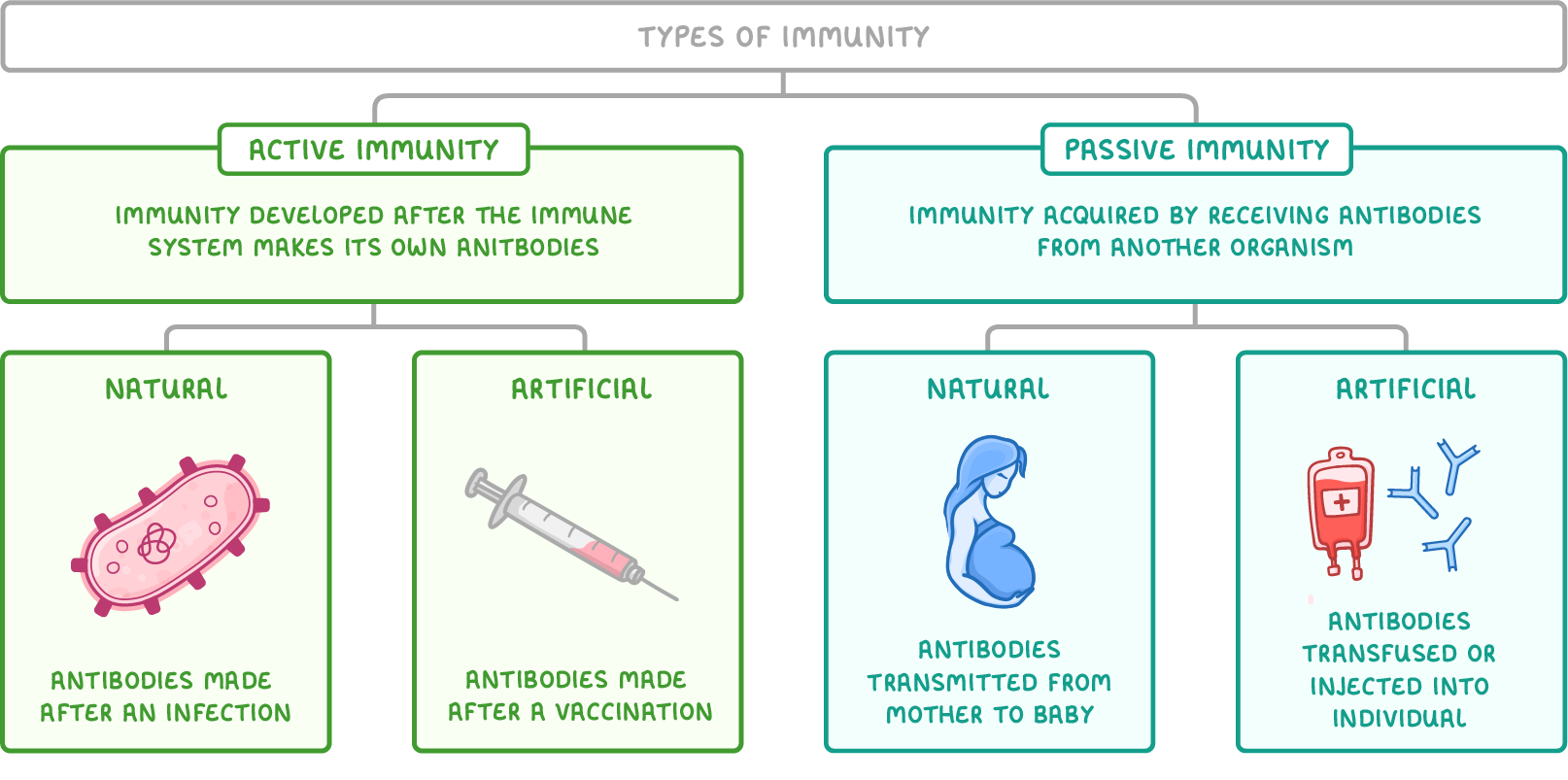Active & Passive Immunity
This lesson covers:
- The difference between active and passive immunity
- How the antibodies in breastmilk help newborns
Types of immunity Immunity to a disease can be either active or passive, and each type of immunity can be gained either naturally or artificially.  |
Active immunity This type of immunity develops when the immune system makes its own antibodies after being exposed to a pathogen's antigens. It takes a while to become immune to the disease in this way, but protection is long-term as memory cells are produced. |
Passive immunity This type of immunity develops when an individual is given antibodies made by a different organism (the individual's immune system does not make these antibodies). This method provides immediate immunity to the disease, but protection is short-term because the antibodies are broken down and memory cells are not produced. Mothers share their antibodies with their babies through the placenta and breast milk. This helps young babies fight off infections until their immune system is fully developed. |
What is the name for the immunity you develop when you are given antibodies made by a different organism?
|
Which type of immunity provide long-term protection against a disease?
Active immunity
Passive immunity
|
When the immune system makes its own antibodies after being exposed to antigens, it is classified as immunity.
|
Which of the following is an example of natural passive immunity?
Infection by a pathogen
Vaccination against a disease
Maternal antibodies
Monoclonal antibodies
|